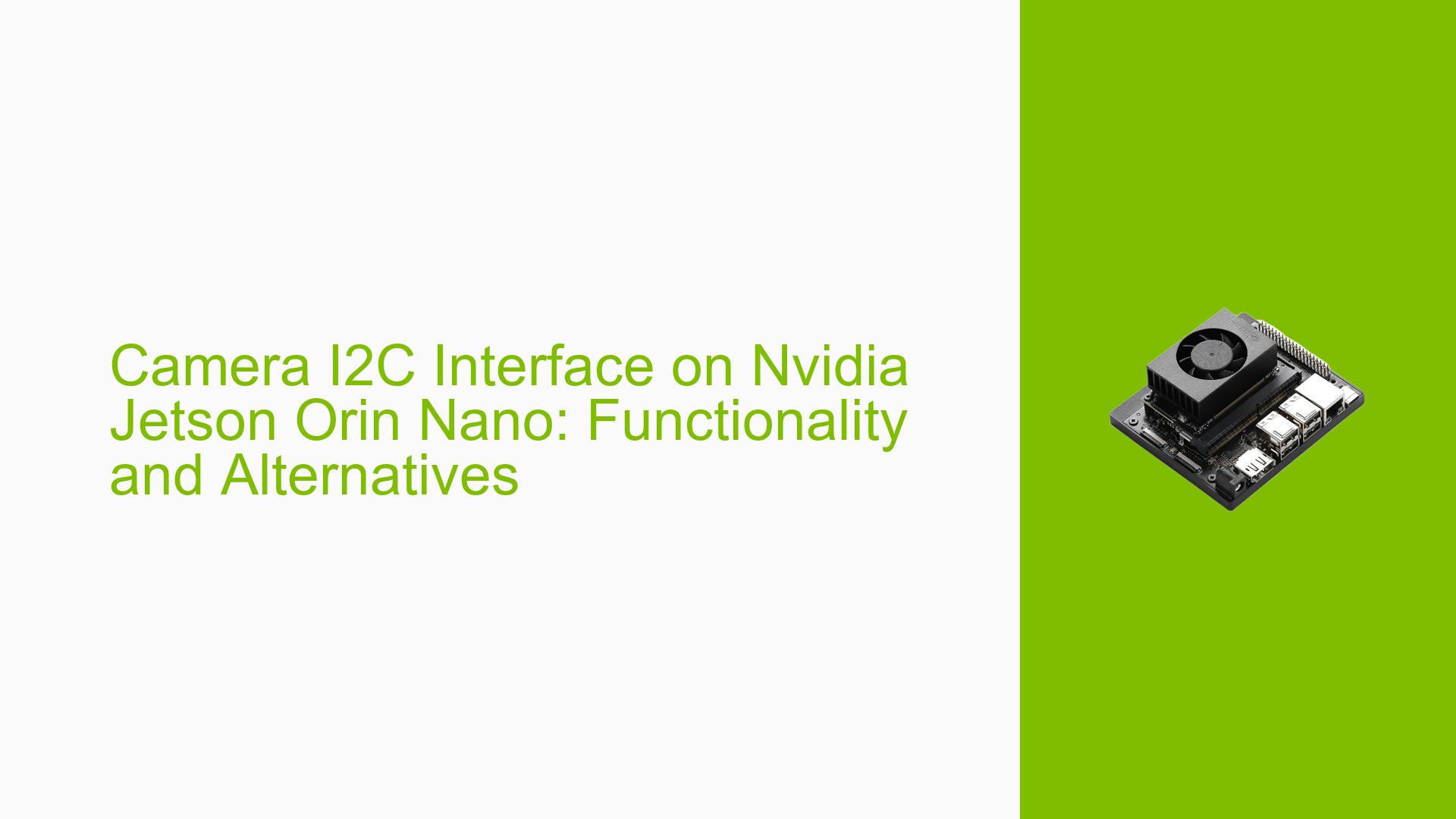Camera I2C Interface on Nvidia Jetson Orin Nano: Functionality and Alternatives
Issue Overview
Users of the Nvidia Jetson Orin Nano development board have raised questions about the functionality and purpose of the camera I2C interface, specifically pins 213 and 215. The main concerns include:
- Understanding the differences between the camera I2C interface and other generic I2C interfaces on the board
- Determining whether alternative I2C interfaces can be used for camera setup and control
- Clarifying the significance of the "CAM" designation for this specific I2C interface
These questions arise in the context of hardware configuration and camera integration, which are crucial aspects of developing with the Jetson Orin Nano platform.
Possible Causes
The confusion surrounding the camera I2C interface may stem from several factors:
-
Naming Convention: The "CAM" designation in the I2C interface name might suggest special functionality, leading to misunderstandings about its capabilities.
-
Legacy Terminology: The use of legacy naming conventions may not accurately reflect the current functionality of the interface.
-
Hardware Design: The physical layout of the board, including the placement of I2C interfaces and their connections to specific components like CSI connectors, may contribute to the confusion.
-
Documentation Gaps: Insufficient or unclear documentation regarding the I2C interfaces and their intended uses could lead to misconceptions about their functionality.
Troubleshooting Steps, Solutions & Fixes
To address the concerns and provide clarity on the camera I2C interface, consider the following information and recommendations:
-
Understanding the Camera I2C Interface:
- The camera I2C interface (pins 213 and 215) is not fundamentally different from other generic I2C interfaces on the Orin Nano module.
- The "CAM" designation is primarily a legacy name and does not indicate special functionality.
-
Using Alternative I2C Interfaces:
- Any I2C bus on the Orin Nano can be used for camera communication, setup, and control.
- The choice of I2C interface for camera integration is flexible and not limited to the designated "CAM" I2C.
-
CSI Connector Considerations:
- While any I2C interface can be used, it’s important to note that only the CAM I2C is exposed via the CSI connectors.
- A multiplexer (MUX) is involved in switching between the two CSI connectors, which may affect the routing of I2C signals.
-
Best Practices for Camera Integration:
- When integrating cameras, consider the physical layout of your setup and choose the most convenient I2C interface based on your specific requirements.
- If using the CSI connectors, be aware that the CAM I2C will be the most readily available option through these connections.
-
Documentation and Support:
- Refer to the latest Jetson Orin Nano documentation for up-to-date information on I2C interfaces and their capabilities.
- If encountering issues or requiring further clarification, consult the NVIDIA Developer Forums or official support channels.
-
Code Example for I2C Communication:
To communicate with a camera using any I2C interface on the Jetson Orin Nano, you can use the standard Linux I2C tools. Here’s a basic example using thei2c-toolspackage:# Install i2c-tools if not already present sudo apt-get install i2c-tools # List available I2C buses i2cdetect -l # Scan for devices on a specific bus (replace X with the bus number) i2cdetect -y X # Read from a specific register of an I2C device i2cget -y X 0xYY 0xZZ # Write to a specific register of an I2C device i2cset -y X 0xYY 0xZZ 0xVVReplace
Xwith the I2C bus number,0xYYwith the device address,0xZZwith the register address, and0xVVwith the value to write.
By following these guidelines and understanding the flexibility of I2C interfaces on the Jetson Orin Nano, developers can effectively integrate and control cameras using their preferred I2C bus, regardless of its designation.
